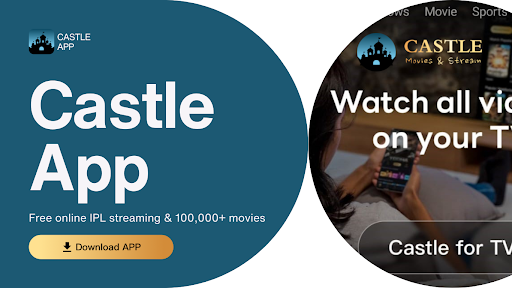Social media has completely changed how people and companies communicate, allowing for real-time discussions, trends, and consumer feedback. However, it can be daunting to keep up with these never-ending streams of information. This is where keeping an eye on social media becomes essential.
The process of tracking and evaluating what people are saying about you, your company, and your sector on social media sites like Facebook, Instagram, and Twitter is known as social media monitoring. You may find important insights, handle issues before they get out of control, and have meaningful conversations with your audience by being on top of things.
This tutorial will provide you with the tools you need to become an expert at social media monitoring, regardless of whether you’re a digital marketer, small business owner, or just interested in how social media trends affect your brand.
The Significance of Social Media Monitoring
Recognize Your Audience Better
You may hear your audience’s actual voice by keeping an eye on social media. You may learn about the preferences, values, and pain issues of your audience by monitoring conversations, hashtags, and comments. When creating campaigns or new goods, this information is really helpful.
For instance, you can modify your content and business procedures to better suit your audience’s ideals if you find that they are especially outspoken about environmental sustainability.
Safeguard the Image of Your Brand
The reputation of a brand may be both its greatest strength and weakness. Monitoring social media enables you to spot and address any unfavorable opinions about your company before they become a serious public relations issue.
Imagine, for example, that a consumer has a grievance about your company that becomes widely known online. Early detection allows you to openly and directly address the problem, demonstrating your concern for finding a solution and your appreciation for client feedback.
Keep an eye on the competition
Monitoring helps you keep an eye on your competition as well as your brand. What do they do well? In what areas are they lacking? You can spot gaps in the competition and chances to differentiate yourself by looking at how other people in your field are doing on social media.
Determine New Trends
Trends change more quickly than we can blink. By identifying new trends, viral material, or shifts in audience behavior early on, social media monitoring lets you stay ahead of the game. Your brand may continue to be relatable and relevant by staying up to date.
Assess the Success of Your Campaign
Social media is the obvious place to get feedback when you start a marketing effort. By keeping an eye on pertinent hashtags, mentions, and audience reaction on social media, you can gauge how well your campaign is doing.
Important Things to Keep an Eye on When Monitoring Social Media
Now that you know the importance of social media monitoring, let’s look at some of the main areas you should pay attention to.
- Tags and Remarks
Mentions or tags are the most straightforward way for consumers to engage with your brand. Every mention, whether favorable, unfavorable, or neutral, is a chance to interact with your audience and highlight the unique qualities of your brand.
- Using hashtags
Trending hashtags are quite useful for tracking discussions about a certain topic or business. To stay up to date, keep an eye on both pertinent community hashtags and branded hashtags that are specific to your efforts.
- Remarks and Answers
Pay attention to the comments area. Here, people frequently express their honest opinions, and monitoring these comments might help you learn what people think of your business or content.
- Interactions with Influencers
The perspective of the audience is influenced by influencers. You may learn more about the larger narrative influencers that are creating and whether they fit with your brand vision by keeping an eye on how they connect with your products or industry.
- Reviews and Comments
Even though they aren’t often found on conventional social media sites, reviews and comments have a big impact on how people regard a brand. Watch for customer reviews that might be published across platforms, whether they are positive or negative.
- New Discussions
Keep an eye out for fresh discussions among your audience or in your business. A minor remark or trend could turn into the next big thing at any time.
Developing a Strategy for Social Media Observation
To get the greatest outcomes, social media monitoring calls for a methodical and regular approach. Here are six stages for creating a successful monitoring plan.
First Step: Determine Your Objectives
With social media monitoring, what goals do you intend to accomplish? Your objectives will determine your priorities, whether they are increasing customer satisfaction, increasing engagement, or outperforming rivals.
Step 2: Establish Your Topics and Keywords
List the keywords that are pertinent to your audience, industry, and brand. This might contain the name of your business, the names of your products, the names of your rivals, industry hashtags, and typical issues that your audience encounters.
Step 3: keep an eye on the platforms where your audience is present
Your brand might not be appropriate for every platform. Rather than overcommitting, concentrate on keeping an eye on the areas where your audience is most engaged and active.
Step 4: Establish a Timetable
Check social media sites frequently for updates. Consistency guarantees that no important information is missed, regardless of whether monitoring responsibilities are assigned on a daily, weekly, or monthly basis.
Step 5: Participate Rather Than Just Watch
Monitoring social media involves more than just keeping an eye on discussions. Constructively handle complaints, express gratitude to clients for compliments, and thoughtfully reply to mentions.
Step 6: Examine and Improve
Utilize the information obtained from social media monitoring to modify your content strategy, pinpoint areas in need of development, and gradually enhance your methodology.
Things Not to Do When Monitoring Social Media
Despite being a very useful tool, social media monitoring has drawbacks. These are some typical errors to avoid.
- Only Paying Attention to Direct Mentions: You will lose out on important discussions where your brand name is mentioned without being explicitly tagged if you simply keep an eye on direct tags.
- Ignoring Unfavorable Comments: Ignoring criticism won’t make things go away. Take advantage of it to demonstrate your commitment to getting better.
- Too Little Spreading Efforts: Not every brand is suited for every platform. Limit your monitoring to the channels that provide you with the most insightful information.
- Not Having a Response Strategy; When it comes to social media, timing is everything. You run the danger of reacting to problems or opportunities too slowly if you don’t have a plan in place.
The Significance of Social Media Monitoring for Your Brand
There is more to social media monitoring than simply tracking hashtags and comments. It protects your reputation, provides a window into the minds of your audience, and acts as a compass for your marketing and business decisions. If you stay proactive, listen to your audience, and adapt your approach based on fresh facts, your brand may improve relationships, confront challenges head-on, and maintain a competitive edge. Effective social media monitoring gives businesses better insights into customer mood and brand impression, enabling them to react quickly to trends or emergencies. Additionally, it gives marketing teams the ability to gauge the effectiveness of campaigns and improve messaging to increase engagement.
Final Thoughts
Long-term success in the fast-paced digital world of today depends on remaining knowledgeable and flexible. Businesses can maintain a strong, trustworthy online presence, improve customer connections, and turn raw data into actionable insights by utilizing the power of social media monitoring. In the end, it’s not just about observing discussions; it’s also about using them to promote more informed choices and significant development.











